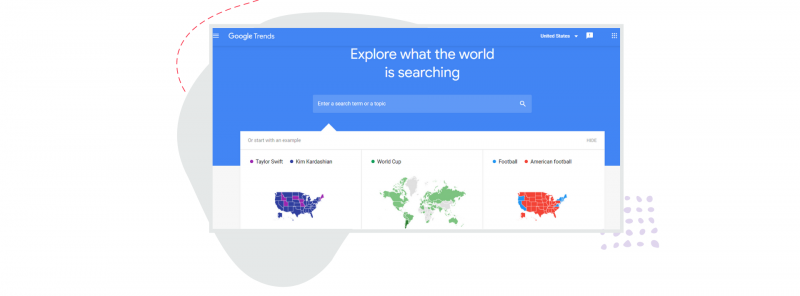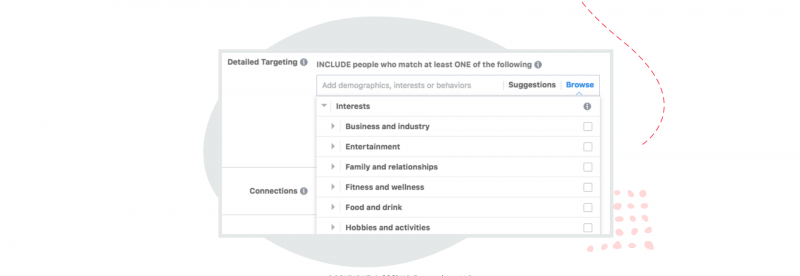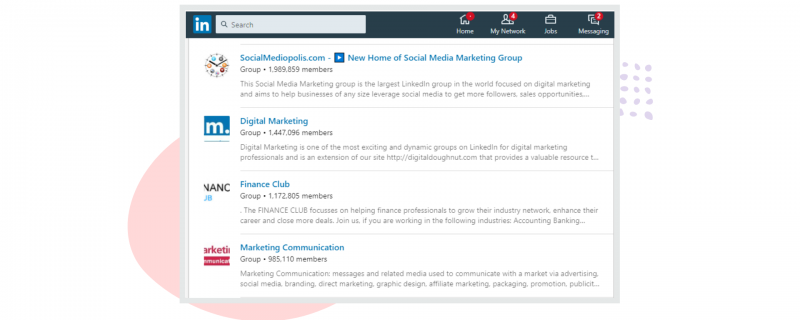You sit and stare at your computer screen, willing yourself to come up with a great idea for your next blog post or newsletter.
You don’t have much time before your next meeting, so you need that stroke of genius NOW!
But what do you do when no ideas come to you?
Everyone should have a list of ‘go to’ sources of inspiration for new content ideas.
Below you will find out how to come up with 50 content ideas in 30 minutes or less! Never be without ideas again!
1. Use Portent’s Content Idea Generator.
The Portent Content Generator will let you create catchy titles for your next blog post, podcast, or even video.
You will just type in your topic and these awesome tools will generate content ideas of titles for you. It will even explain why these titles will best suit your next content.
2. Answer Your Most Asked Question
Imagine you are writing for your ideal customer: What is one of your most asked question(s)?
Answer that question(s) on a blog post, your next newsletter, a social media post, or your next video!
3. Check What's Trending

4. Evaluate Your Content Performance
As a business owner, it is important for you to check on your website analytics. The Site Page and Landing Pages statistics can help you identify what topics your visitors are most interested in. Then you can generate more content ideas from there.
5. Do a Poll or a Survey

Send a short poll or survey to your email list or social media followers to ask them their most pressing questions. You can even ask them what topics they would want next from you and you can generate content ideas from there.
6. Identify Your Keywords
Set up Google Alerts for keywords related to your business and niche. You can easily set it up by going to Google Alerts. Choose your options for language, how often you would want to get the notifications, how many, and which email do you want them delivered to.
7. Visit Facebook Groups
Join a Facebook group in your niche to see what your target market is talking about. Facebook users are now engaging with more content from groups so you can definitely see what content is a hot topic!
8. Consult with Your Followers

9. Check Out Popular Content
Visit popular websites or blogs in your niche to see which topics they are writing about: find one that jumps out at you, and then spin the title to create your original content.
10. Read Trending Content 
Visit Google Trends to find trending topics. Trends analyzes the popularity of top queries in Google search across different regions and areas.
11. Use Online Generators for Ideas
Use HubSpot’s Blog Topic Generator to get your creative juices flowing! Just type in 5 Topics from your niche, then this tool will generate weeks of content ideas for you!
12. Use Interest Lists
Use Facebook Interest Lists to find the content of interest in your industry.
For more on this, see my post How To Create Facebook Interest Lists.
13. Use a Book
Page through a book that would be of interest to your audience and see if any topics jump out at you. Book titles are instant content ideas that work well.
14. Check Questions in Your Social
Take a look through your Facebook ‘Posts to Page’ to see if there are any questions you can answer in a blog post.
15. Use Buzzsumo
BuzzSumo is a cloud-based platform that helps you discover the best engagement, content, and outreach opportunities across social and search.
You can discover new keywords, trending stories, customer questions, and content success, all while monitoring what’s most important to your brand.
16. Solve A Problem
Ask yourself this question: What is the #1 issue my target market struggles with?
You can attempt to write a blog post that solves this problem.
17. Check your Email Marketing Platform Analytics
Look through your email marketing program’s analytics to find out which topics and headlines have gotten the most opens, click-throughs, and conversions.
18. Read Your Blog Comments

Look through your blog comments to find questions or topics you could address. You can generate content ideas from a wide variety of following.
19. Use the Google Keyword Planner
Keyword Planner will help you research keywords for your search campaigns. You can use this free tool to discover new keywords related to your business and see estimates of the searches they receive and the cost to target them.
20. Use Social Mention
Social Mention is a simple to use social media search tool that aggregates user-generated content from across the internet into a single stream of information.
It’s a social media monitoring tool that allows you to track and measure what people are saying about your brand anywhere on the globe, in real-time.
21. Do a Google Search for Popular Words

You can do a Google search for a popular keyword in your niche to see what others are writing about the topic and add your thoughts to the conversation.
22. Use List Posts

23. Visit Asktopia
Asktopia is not a forum but a community dedicated to creating the world’s most useful and usable library of expert answers to questions on a wide variety of business topics including finance and accounting, human resources, information technology, law and compliance, sales and marketing, and strategy and operations.
24. Use Mix
Go to Mix (previously stumbleupon.com) to continue discovering and stumbling upon interesting websites and articles and ‘stumble’ to find possible sources of inspiration.
25. Compile Blog Posts
You can compile current blog posts into a resource list.
For instance, on my blog, I might create a post called Top 35 Business Tools for Today’s Entrepreneur, and include links to my top tool recommendations for today's small businesses.
26. Consult A Business Owner
Ask a fellow business or website owner for ideas! When you talk to other business owners, you build a network of mentors. You breathe in their wisdom and it becomes invaluable especially the relationship you build with them.
27. Use Hashtagify.me

Hashtagify is the most advanced Twitter and Instagram Hashtags tracking tool. This tool allows you to find the best hashtags and will help you get to know your influencers and competitors better.
28. Use The Blog Post Ideas Generator
Blog post ideas generator helps inspire bloggers in creating fresh, enticing, clickable content. This tool will get you started! Having an idea about what you can write may give you inspiration. Simply input your keyword(s) and click on the ‘generate blog post idea’ to get rollin'.
29. Visit Forums Related To Your Niche
Use niche forums to learn about your target audience. You can listen to their needs and you can use that to be better in delivering your offer because you know how to approach them.
30. Browse Offline Marketing Materials
Look through your offline marketing materials for content ideas. Offline marketing includes billboard ads, presentation materials, print ads, brochures, etc.
31. Use Quora

Visit Quora to find questions you can answer. There's no more legit way to find what's interesting to know than from real questions from people.
32. Visit LinkedIn Groups
Visit a LinkedIn group to find out what people in your industry are talking about. Groups on LinkedIn allow people with similar interests to share insights, solicit guidance, and build valuable connections. Watching conversations unfold can provide you solid ideas on what you would like to share with your audience.
33. Check Your Twitter Sidebar
Check out the trending topics in your Twitter sidebar. Keep your audience updated with what's hot in the industry, entertainment, or whatever your audience may be interested in.
34. Use Current News
See what’s happening in the news: Write a story about current news as it relates to your niche. You want your followers to get the latest news and current trends from you.
35. Visit Answers.com
Visit Answers.com to input questions and get answers that will trigger content ideas.
36. Take A Walk
Take a brisk walk and see what ideas come to mind! Experts say, as you walk, your whole body wakes up — especially your mind. Bright ideas naturally pop in.
37. Discover Trending Events on Facebook
Check out Events on Facebook to see Topics Frequently Covered. You can never tell how a simple Facebook search can spark that ‘Eureka!' moment.
38. Do Paper Brainstorming
Spend 10 uninterrupted minutes with a pen and paper brainstorming possible content ideas. Jotting down helps you retain ideas, and effectively organizes and emphasizes your thoughts.
39. Use Ubersuggest
Find keyword suggestions and variations based on a particular topic. Ubersuggest allows you to discover the strategies that were successful for others in your market.
40. Use Google Auto-Complete
Find popular content ideas in the Google machine! As they say, with Google, everything is at your disposal. Take advantage of the widely-used search engine.
41. Answer Your Own Questions
Attempt to answer a question that you’ve always wanted to know the answer to! It's likely that the topics you'd want to be answered are also the ones your people want to be addressed.
42. Check Out the Content of Competitors
Visit a competing blog and look for a list of their most popular posts (you can often find such a list in the sidebar). Use this as a starting point for your own post. Use competitors to your advantage.
43. Use Pinterest's Search Box
Start typing a keyword into Pinterest’s search box to find popular searches (it will automatically populate the search box with the most popular searches starting with the letters you type in).
44. Visit Blog Engage
Visit Blog Engage to find popular topics that bloggers in your niche are writing about. Read and write what others are writing about.
45. Browse Through Pinterest
Browse through Pinterest to find popular images that inspire your own content ideas. Discovering what's on the roll will make it easy for you to do the same.
46. Compile an FAQ List
Scour your social media accounts and blog comments and compile a list of FAQ’s you can answer in a blog post. This will address what your readers/followers will most likely want information from you.
47. Read an Industry Magazine
Leaf through an industry magazine to see what inspires you. Yes, magazines, whether print or digital, still do magic!
48. Ask Social Media Moderators
Ask your social media moderators for content ideas based on what they see every single day. They are at the forefront of your social media platforms so they have first-hand knowledge of current trends, information, and whatnots.
49. Use CommentLuv
Use a plugin like CommentLuv on your WordPress site to see what your commenters have been blogging about.
50. Use Keyword Niche Finder

Use WordStream’s Free Keyword Niche Finder tool to find popular subtopics based on a general keyword search. Utilize the keywords for your topics and titles.
Bookmark this list of how to come up with 50 content ideas in 30 minutes or less so you can pull it up the next time you find yourself wondering what to write about! I hope it helps!
Visit my post titled, The Ultimate Content Marketing Tools List, for more content ideas for your business!
What would you add to this list? What do you do when you’re not sure what to write about? Share below!
About Author
Kim Garst
Kim Garst is a renowned marketing strategist and speaker who is trailblazing the use of artificial intelligence in digital marketing. With over 30 years of experience as an online entrepreneur, Kim helps entrepreneurs grow their business and authority online by using AI technology. She is leading the way with proven AI frameworks that help entrepreneurs build authority in their space.
She is keynote speaker and an international best-selling author of Will The Real You Please Stand Up, Show Up, Be Authentic and Prosper in Social Media.
Named by Forbes as a Top 10 Social Media Power Influencer, Kim is well-known for her skill to simplify complex technology and make the use of AI understandable for business growth. Her relatable, actionable advice helps guide new entrepreneurs to harness the power of AI to succeed in digital marketing. Kim is leading the way in combining human and technological skills to create a new model for AI-powered marketing.

















































14 thoughts on “How To Come Up With 50 Content Ideas in 30 Minutes or Less”
All great tips! Focusing on #2 should give you more than enough ideas. Instead of, or in addition to, a FAQ page, answer each question in a blog post. Think through the questions that you were asked over the last week. Type out the answer or make a quick video with your response.
thanks for sharing these great ideas. cannot wait to start using them
Glad they were helpful to you, Alene!
Thank you so much for sharing such great content. I write lots of blogs and I’m always after new ideas. Thanks again!
Glad you picked up some ideas, Cherie 🙂
Glad you picked up some ideas 🙂
Awesome!
Woohoo! Glad it is useful to you, Jessica!
Try one small thing at a time, Jacqueline until you master that and then move to the next thing. You can do it!
Ideas for blogging has always been a struggle so thanks for these tips Kim!
Wow, this was terrific. I did try hubspot’s but it was repititive after a while. But all others are just mindblowing. No one can ever complain of writers block ever after reading this. 🙂
Thanks Kim! Wonderful ideas. I’m going to give HubSpot’s Blog Topic Generator a try. I appreciate the guidance.
Hope you love it 🙂
Answer Your Most Asked Question and Compile an FAQ List is a very good idea.